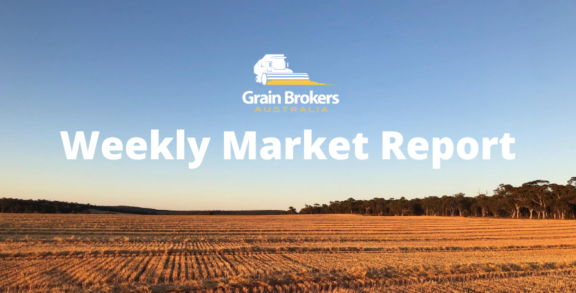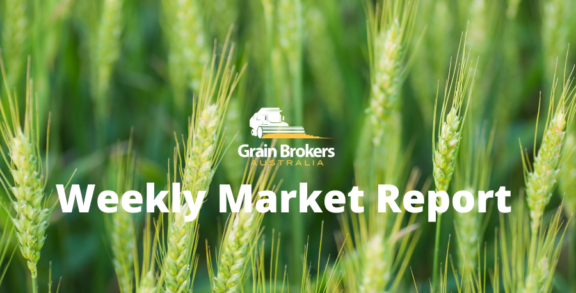
The current dynamic driving global wheat markets higher has been the ongoing dry conditions across much of Russia’s winter wheat belt. This has prompted local analysts to cut their production forecasts aggressively over the past few weeks. Lower production will eventually culminate in a lower exportable surplus for Russian traders in 2024/25 despite carrying in larger than normal stocks from the current season. But how did we get here?
Throughout the vast majority of last year and through the early parts of this season, the narrative has been that global wheat stocks are heavy, and this is the reason prices are lower. The sheer weight of selling pressure out of Russia meant that global consumers were able to dictate market values as traders struggled to clear surplus stocks.
How quickly things can change. Fast-forward a couple of months and add some unfavourable weather across the winter wheat fields of the number one global exporter, and market sentiment has done a complete 180-degree turn. We have been losing new season production potential in Russia, and international markets are now getting concerned about the available supply of wheat, ultimately pushing values higher.
There is nothing new here as grain markets are seasonal, and market participants are familiar with the ebbs and flows that accompany changing weather and variable price environments. Sometimes these market dynamics can be easy to understand and other times they can be completely confusing.
Russia’s ascension to the number one position amongst the major wheat exporters has likely added some complexity to the current market environment. The situation has been exacerbated by the recent exclusion of multinational traders from the Russian market, which has subsequently reduced transparency around Russian market dynamics.
The global wheat market had become very comfortable with supply but now finds itself in a situation where a significant weather issue is playing out in Russia, which has the potential to tighten the supply situation quickly. The reduced transparency in the Russian market adds to the general uncertainty, helping push global markets higher as traders cover short positions and take risk off the table.
The challenge for global markets, as we start to lose supply, is to try to understand where markets need to price to resolve any balance sheet issues. This equation is never easy and is potentially more difficult this year, given that the major global production issue is playing out in Russia. The frequently asked question amongst traders is: Do we have enough supply to cover demand?
The global trade flow matrix is extremely complex and effectively uses a combination of price, quality and availability to determine what wheat trades to where. Nothing is really set in stone, but there are many well established trade flows that execute with great regularity. There are also other trade flows that are more opportunistic and price sensitive, and these are the ones that typically gather more attention during periods of stress in markets.
In times of compromised global supply, the market’s focus is on examining the available supply amongst the major exporters to understand whether there is ample supply to cover the anticipated demand and which trade flows can be switched. When that equation does not add up, the market typically starts to add risk premiums to prices. The market needs to encourage wheat owners to sell their stocks, or the market needs to move to a higher price level that will ration demand.
Does the global wheat market need to ration demand today? While this is not yet clear today, it is becoming more likely that we will need to ration demand to some extent to restore the balance sheet to a more comfortable level of stocks. Wheat stocks amongst the major exporters are suddenly getting tighter, and given wheat’s status as the major global food commodity, it remains imperative for market confidence that the market holds a reasonable level of free stocks from one season to the next.
The easy way to help restore the balance sheet when supply is lower is to ration demand, and as global wheat values edge higher, this is effectively happening. Since bottoming out in early March, wheat markets have added around US$50 per metric tonne to global FOB values. This has caught global consumers by surprise and will likely create some stress in the more price sensitive markets. These higher prices will eventually lead to lower consumption and effectively ration demand in those regions.
We have also seen a significant gap develop between wheat prices and global feed grain prices on the back of this wheat rally. Corn is the primary global feed grain and is typically much cheaper than wheat, but over the past couple of years, there has been an abundant supply of relatively cheap feed wheat, which has competed openly with corn and other feed grain commodities. There is around 150 million metric tonne of wheat used in global stockfeed rations annually, so in a market environment where wheat supply is suddenly compromised, it is logical that cheaper feed grain commodities such as corn will be substituted back into rations to replace wheat.
The bottom-line today is that the wheat market has naturally started to ration demand via higher prices, even though this is not fully visible in the market. The question today is how high do wheat prices need to go to resolve the balance sheet issues? And the answer is that we don’t know at the moment as the final global supply situation is not yet understood. It is possible that we have already priced enough risk premium into values today, but again this is unclear and is a key reason why wheat markets will remain volatile in the weeks ahead.
It is important for market participants to maintain perspective and balance their expectations around where global wheat prices are likely to trade. Ultimately, it is the job of the market to trade to a price level that will balance the supply and demand equation, and this is rarely straightforward.
Call your local Grain Brokers Australia representative on 1300 946 544 to discuss your grain marketing needs.
Written by Brendan Dart.





